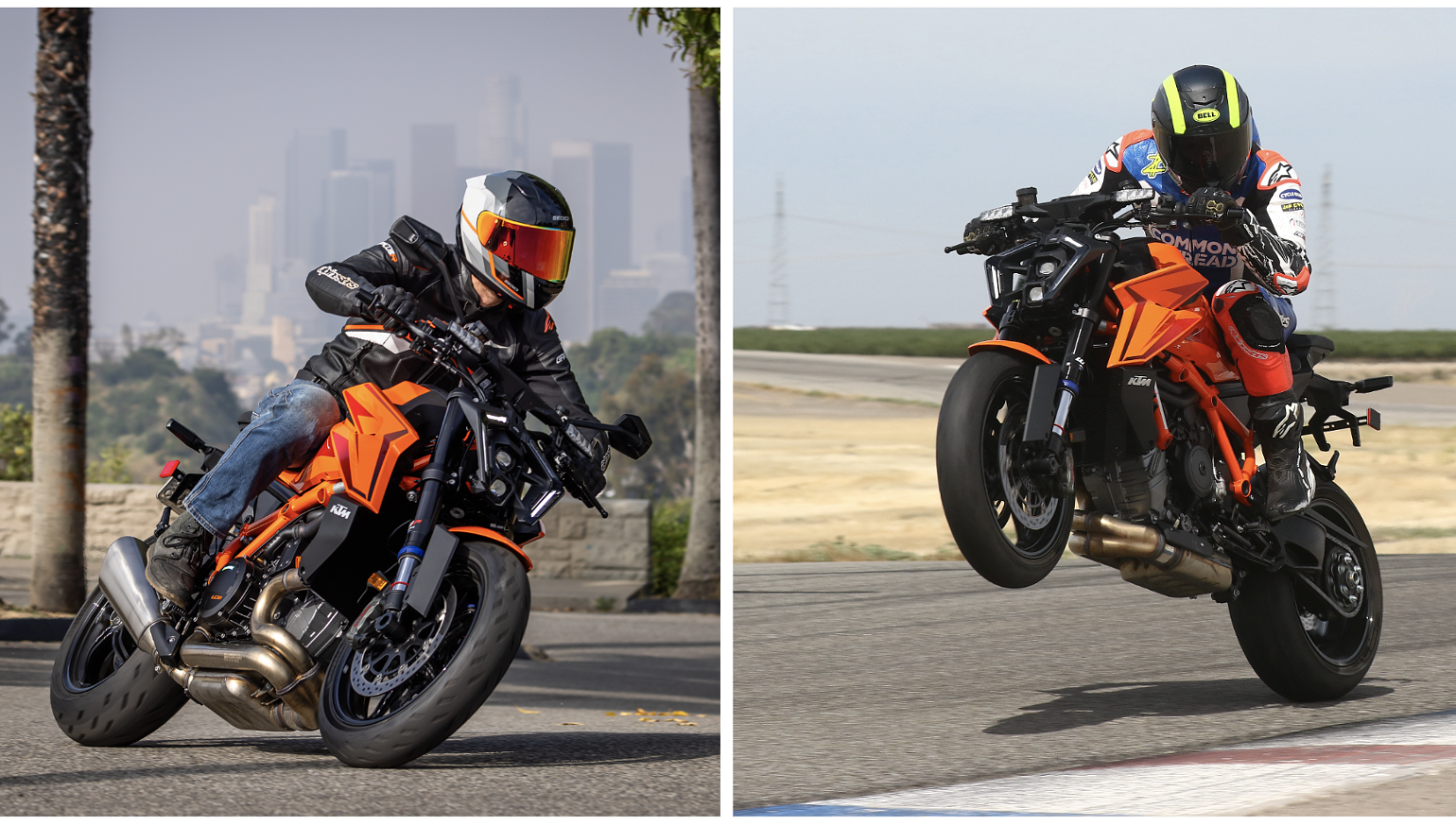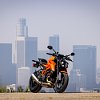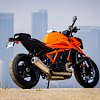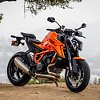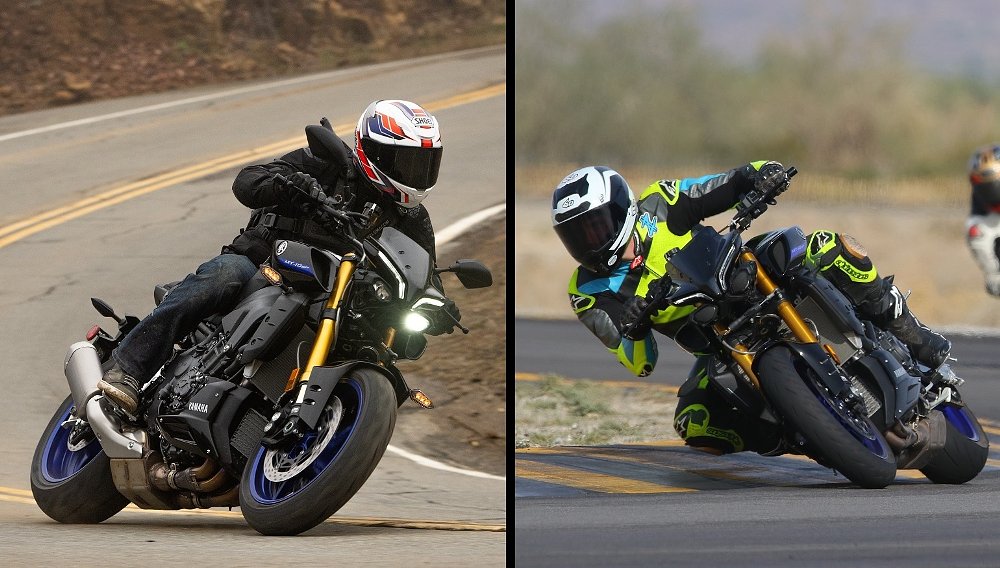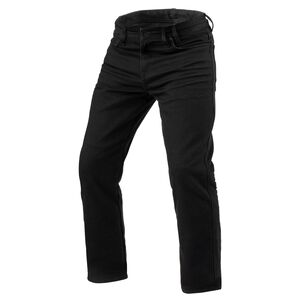Well shucks. I remember you, Super Duke, from when you were still the new kid. You were easy to understand and easy to love. Now look at you, all grown up. Educated and sophisticated, even in the name: 1390 Super Duke R EVO.
It’s been a long time coming, of course. A decade has passed since the 1290 Super Duke R catapulted KTM into every conversation and comparison of the best naked motorcycle money can buy, and I would say it feels like about that long. There’s been a lot of progress in the two-wheel world since then.
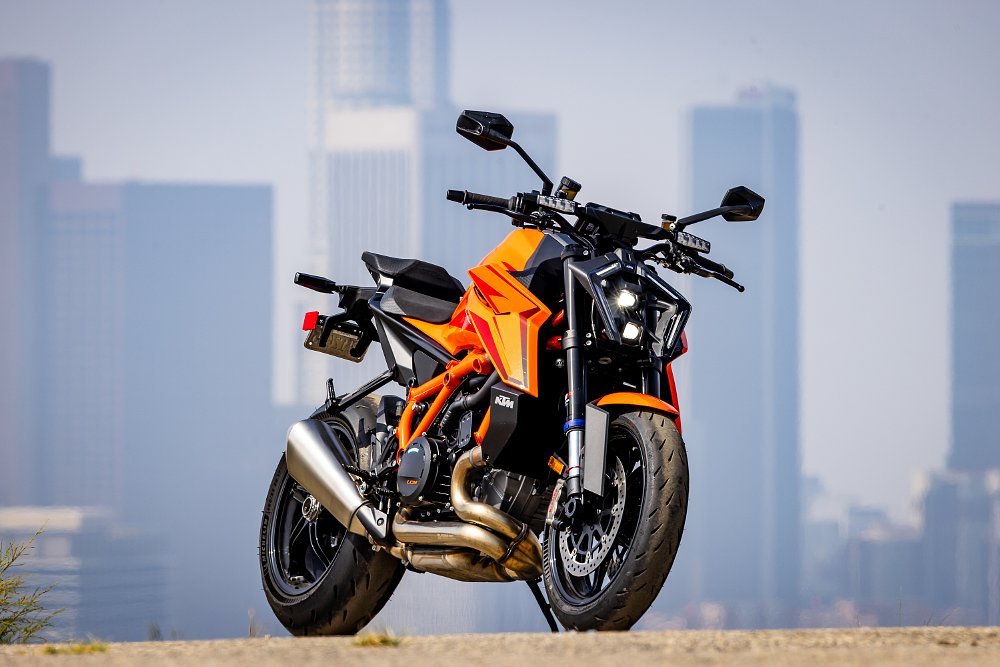
Plenty of that progress has been from KTM, to be fair. Including a sizable update to the 1290 Super Duke in 2017, when the bike adopted a TFT dash with much more luxurious electronics, fancier metals in the engine, new lighting and styling, a sportier riding position, more aggressive suspension tuning, and a significant bump in the MSRP. KTM also began dabbling with pay-to-unlock features like the quickshifter, Bluetooth connectivity, and adjustability of track-specific rider aids.
The 1,301 cc engine stayed largely the same in 2017, which was a good thing. However, looming changes to emissions rules have arguably been accelerating motorcycle makers into updating their machines and it was KTM’s turn to make its supreme Duke fit the mold of Euro 5+ regulations. A bump in sophistication was in order, and for 2024 the 1390 Super Duke R engine has simultaneously taken a couple of paths to achieve that.
Adding Super, staying Duke
Boring out the 1290’s sleeves a couple of millimeters (110 instead of 108) pushes the displacement to 1,350 cc, while a new airbox and bigger throttle bodies help the larger mill breathe freely. Variable valves are the big news, though, electronically shifting the intake cam’s lift and duration and, with fuel mapping that adjusts accordingly, theoretically delivering the best version of the engine’s potential across the entire rev band.

At around 5,700 rpm, an electronic actuator drops a pin into a gate machined into the cam, which kicks the shaft horizontally on its axis to follow a different profile. About 250 rpm later the other cylinder follows suit, in the hopes of smoothing the impact of the engine’s change in character. The 75-degree V-twin now claims 190 horsepower and a Gold-Wing-like 107 foot-pounds of torque, all while being friendly enough for European standards.
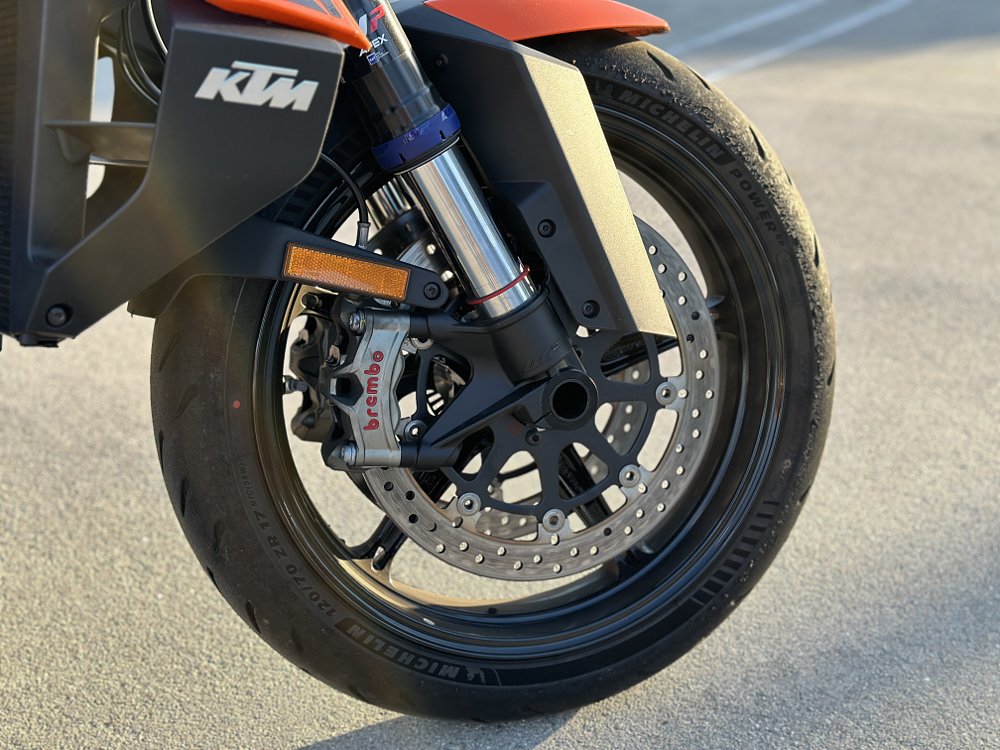
The Super Duke’s suspension has grown in complexity as well, with semi-active damping available in the fork and shock. Plus a handful of ride modes, expanded app connectivity and capability, tire-pressure monitoring, and a supermoto ABS setting. A few features like cruise control and cornering ABS practically carry over to the new bike, too.

That’s before you splurge on the optional accessories. Our test bike came with the $1,154 Tech Pack, which comes with all the fixin’s — stuff like a quickshifter, launch control, engine braking, and expanded adjustability for traction control, wheelie control, and throttle maps. Not to mention a staggering amount of tweakability for the semi-active suspension including, yes, shutting off the actual semi-activeness. A multitude of ride modes and pre-set suspension parameters offer different feedback from the chassis, with throttle maps to either match or counteract the rest of the settings.
It’s a lot.
Maybe you agree that all of the whizbangs and gizmos that every manufacturer feels so compelled to weave into our favorite machines aren’t what make them our favorites. My true curiosity with this new 1390 was how the new mammoth V-twin engine interacted with the relatively unchanged steel-tube trellis frame. Beyond the adjustability and the opulent features, determining whether the foundation is still as unique and pleasing as it always has been, that’s the point.
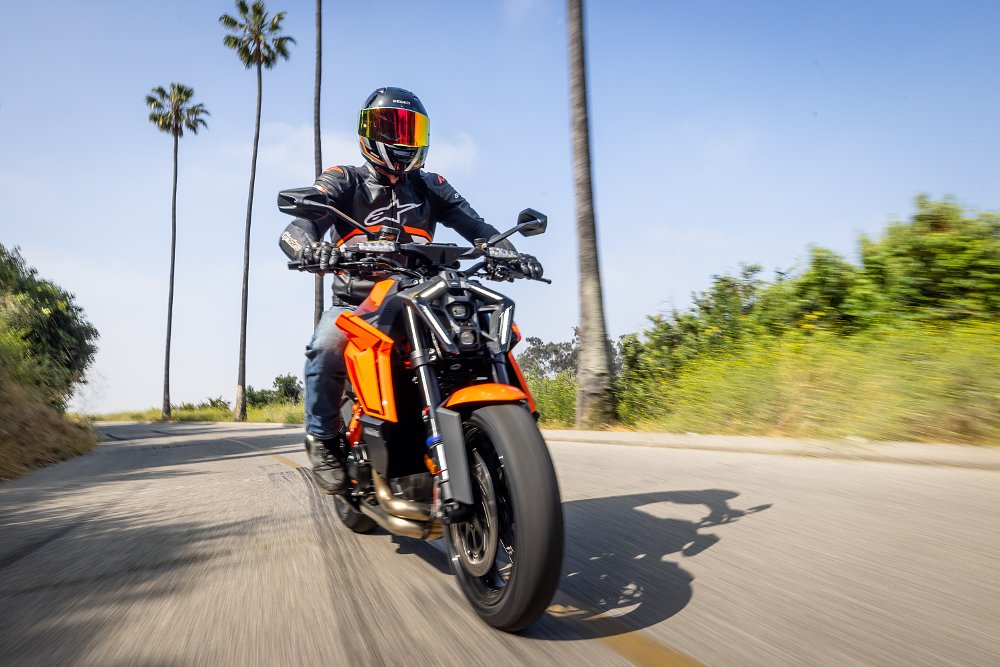
Riding slow and riding fast
Climbing aboard KTM’s new Goliath with the engine still switched off, it was clear immediately that the attitude of the machine had changed yet again. The seat height specification is the same as it was in 2017, at 32.8 inches, but perhaps the new subframe (now cast aluminum instead of steel trellis) makes the seat of the 1390 feel tall — more aggressive and sport-focused than in the past.
In the same vein, the handlebar feels low and narrow for a naked bike, and the cockpit seems spartan. To put a finer point on it: At six feet, two inches tall, I can see the front fender and the leading edge of the front tire while in a normal seated position. The last bike I can remember feeling this spare and raw was Ducati’s brutal, 1098-powered Streetfighter S. Whether or not that’s a compliment depends on who you ask and when you ask them.
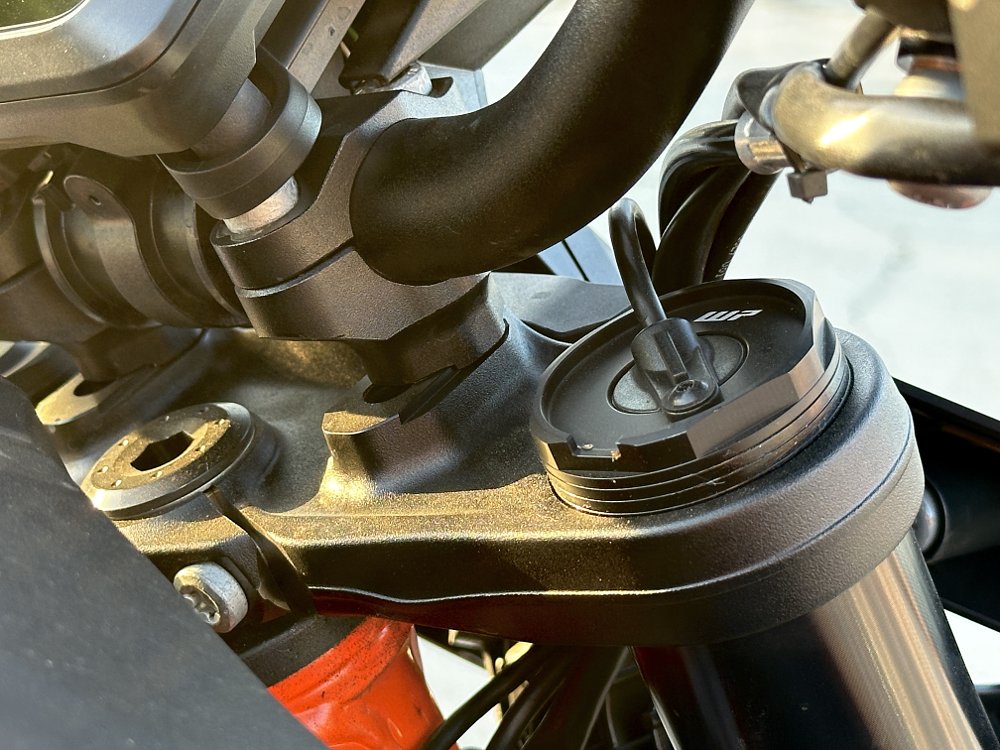
That said, rolling down the road the new Super Duke feels surprisingly reasonable. The saddle looks flat and harsh but in practice has plenty of cushion, and the riding position offers a nice blend of commanding and comfortable. Sporty, but far from brutal.
As with any properly designed motorcycle, all of the fit and finish on the bike acts to serve the engine. And just like the 1290 iterations of the Super Duke that preceded this bike, the power plant is flippin’ staggering. With most motorbike engines, you have to wait for power to arrive, one way or another. There is no waiting for power on a Super Duke, especially now.
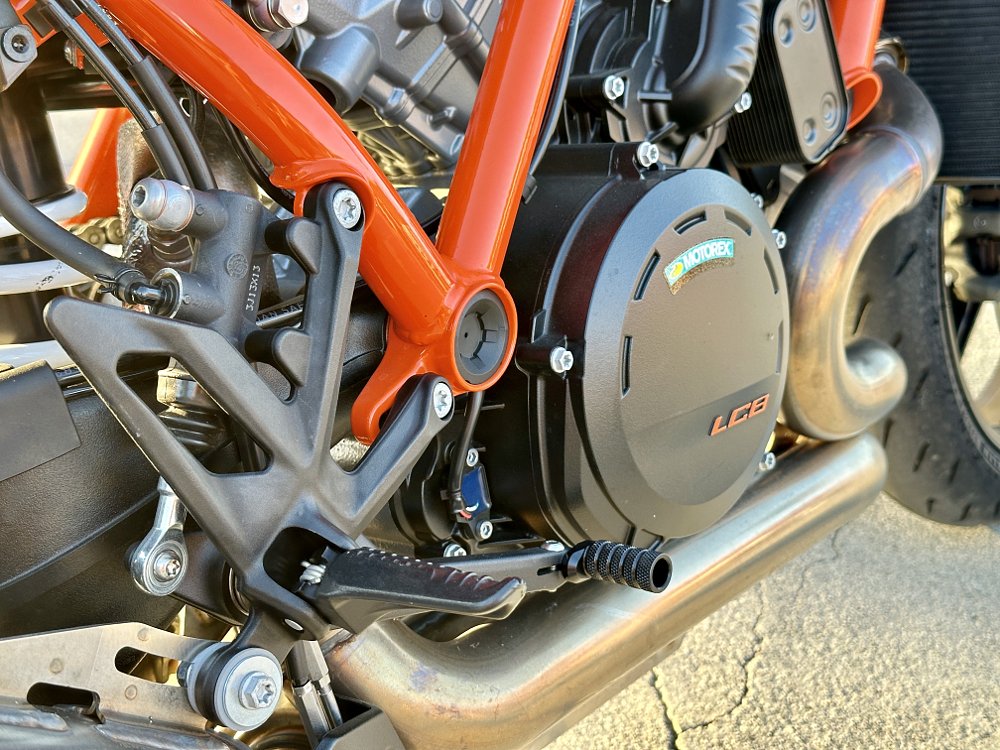
I came to love the feeling of asking it to accelerate hard below 4,000 rpm, where it shudders like a one-ton workhorse tightening all of its muscles and fires forward, almost like it’s been spooked. If the initial violence of prodding the engine doesn’t put you off, the rush of top-end power above about 8,000 rpm is eye watering. It’s the only place in motorcycling I’ve ever sat that approximates the neck-snapping torque of an electric motorcycle along with the savage acceleration of a current showroom superbike.
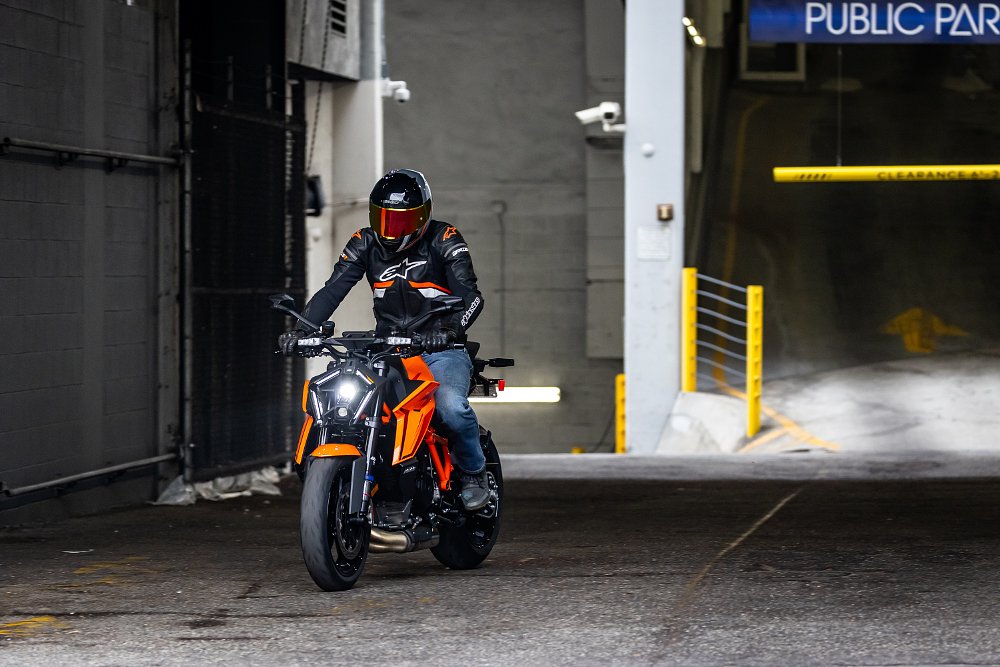
Ari, tester of many motorcycles over the past 15 years or so, borrowed the 1390 to pick up some lunch and offered nicely concise feedback in exactly three words when he walked back into the office. One was a swear word and two took the Lord’s name in vain so I shouldn’t repeat any of it here, but you get the idea. It’s not just fast, it’s surprising. Even for people who know what to expect.
There are a couple of reasons for that, one being the cam-shfit technology that changes the demeanor of the engine as the revs climb. That said, the old 1290 engine also offered absurd torque along with a fiery top-end pull — maybe the new cam system accentuates it, but I think the change in chassis dynamic is the biggest difference maker.
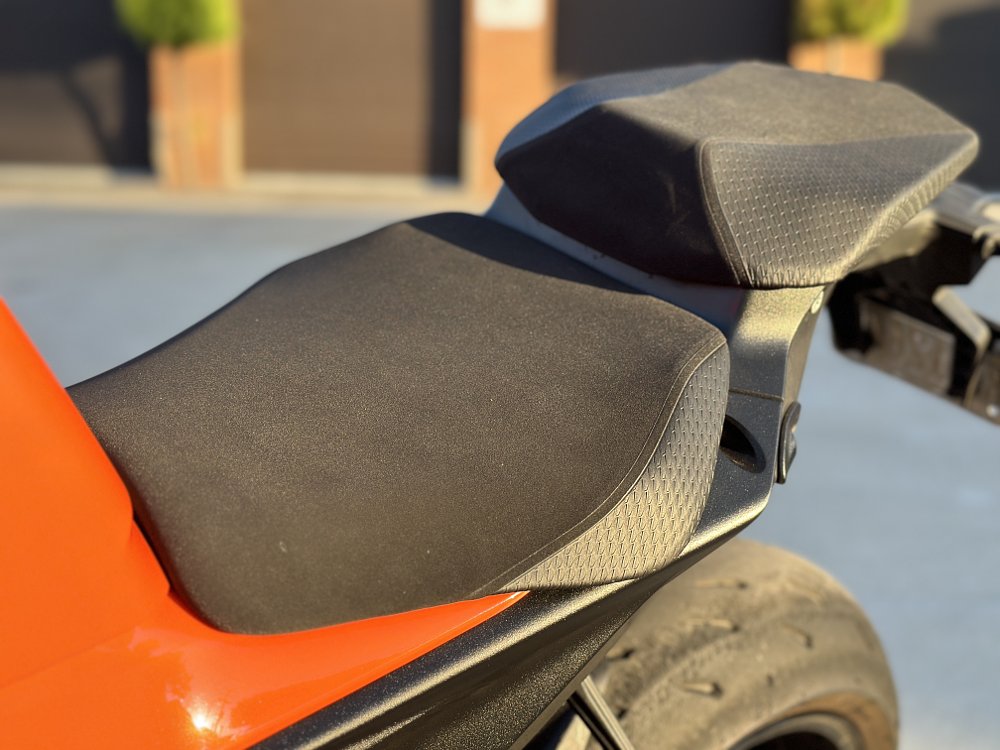
This iteration of the Super Duke R is more serious than previous models. The first-gen 1290 Super Duke was pretty playful; still insanely fast but also purely for hootin’ and hollerin’ around on the street. It was a little out of place on a closed circuit. Having evolved during its time as a 1290 to be more track-focused, the changes made to the 1390 represent another shift in attitude. It’s meaner and more pointed. It feels less interested in wheelying and more determined to accelerate.
Taking it to a racetrack was the next logical step, then. The team here at Common Tread missed the global launch of the 1390 Super Duke R EVO at the Almeria Circuit in Spain, so I took our tester to the next-best place: Buttonwillow Raceway. I removed the mirrors and adjusted the Michelin Power GP tires to approximate track pressures. The rest of the adjustments I tackled through the dash.
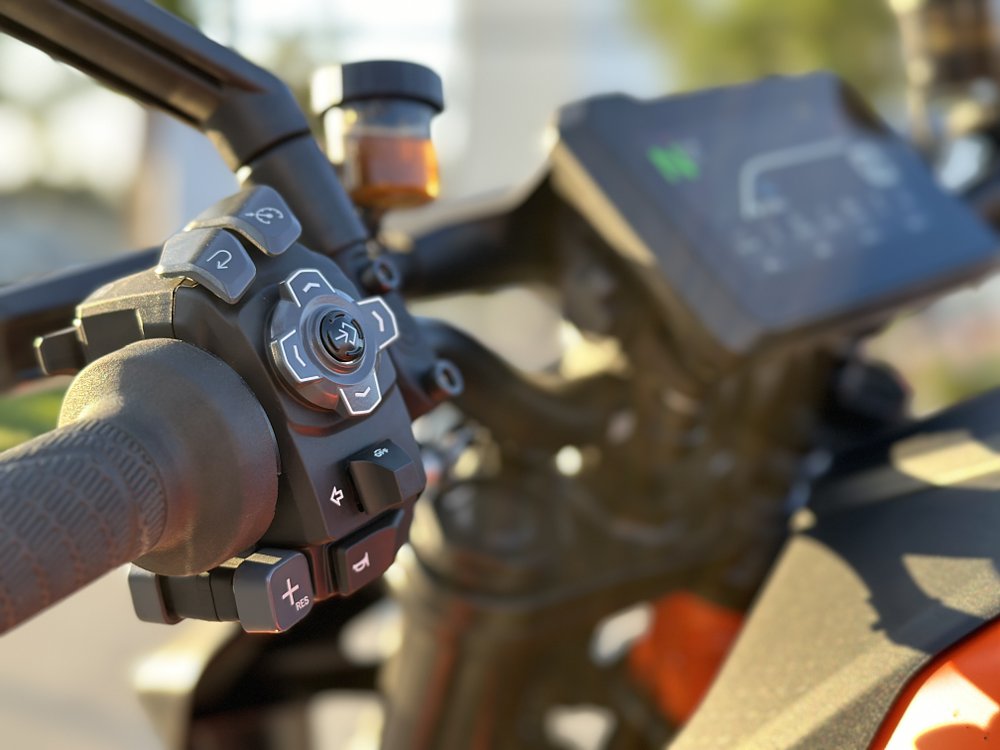
I don’t know if there’s even enough space on the internet to talk through all of the options that the 1390 Super Duke’s suite of electronic rider aids offers the rider, but here’s what I tried. Straight-up Street mode for my first session on the track, just to get warmed up, and the bike felt surprisingly at home. Traction control was a little intrusive, as you might expect, but I didn’t get the ABS to engage until I really hammered on the brakes.
Going to Track mode offered me more adjustability for the TC, throttle response, and wheelie control, plus engine braking and Motor Slip Regulation, which cracks the throttle butterflies to avoid rear-wheel chatter on deceleration. Tuning the TC is a nice feature, especially being able to do it on the fly via the thumb and index-finger paddles near the left grip (Aprilia started doing this years ago and it’s great). I barely found a need to fiddle with the rest of the options.
Ultimately I preferred Performance mode, which doesn’t change the TFT dash into an insane, lap-timer-priority, video-game wet dream but rather keeps the normal display, while allowing adjustability of all the same electro-thingies. I also never felt a need to use the Pro suspension mode, which essentially allows standard adjustment of the damping circuits and freezes the bike’s automatic and semi-active suspension regulation while riding. In other words, old-school suspension tuning, except with buttons instead of screwdrivers.
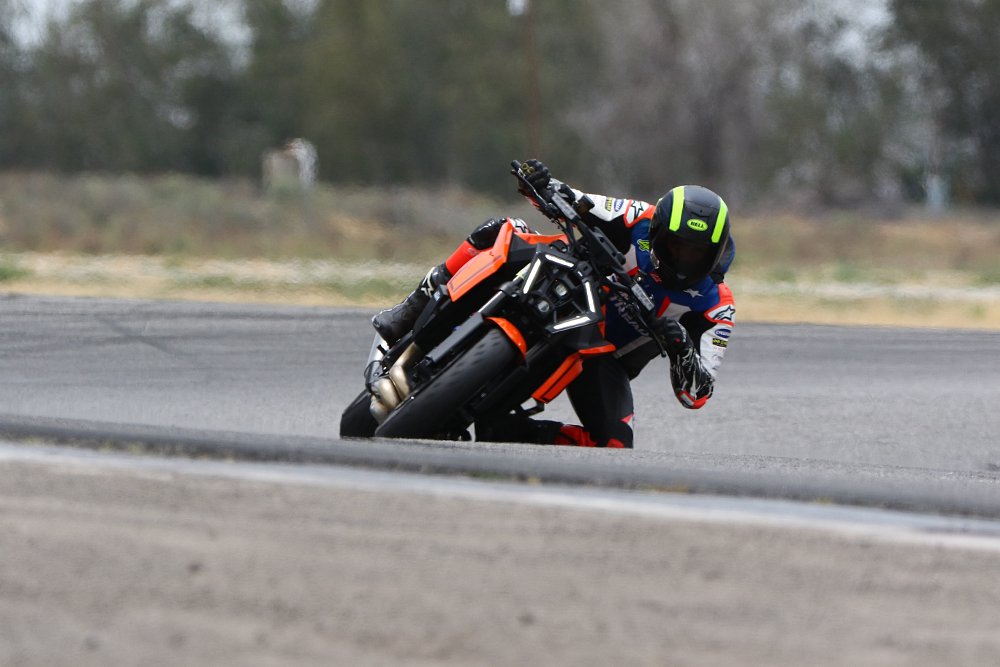
The suspension is so dang stiff right out of the box, I think that aspect of the bike is best suited to the track anyway. Not to mention the engine, which is definitely more appropriate on a closed course, where it’s acceptable to hold the throttle open in third or fourth gear and ride the rear brake as the front end claws at the sky. To appreciate the fullness of berserk power that the Super Duke can produce you either have to be a miscreant or a track-day junkie. Or both.
Most importantly, the foundation of the Super Duke is definitely improved as a track machine. I think it lacks the final few percent of true killer instinct on a racetrack that I feel when I ride a BMW M 1000 R or an Aprilia Tuono V4, but the Super Duke is well beyond competent. It’s planted and agile, and offers good feedback. I even liked the showroom tires, for what it’s worth, though good track riders will want to treat themselves to stickier rubber. The bike is worth it.
Back on planet Earth
Setting aside outright performance, the Super Duke’s electronics do some tricks that are more applicable to regular ol’ riders, too. For example, among the forest of options in the suspension settings is a manual adjustment for shock preload, allowing the rider to choose Low, Medium, or High. Set to Low, the seat is noticeably closer to the ground, and the sharpness of steering inputs is dulled slightly. This can be helpful on both accounts.
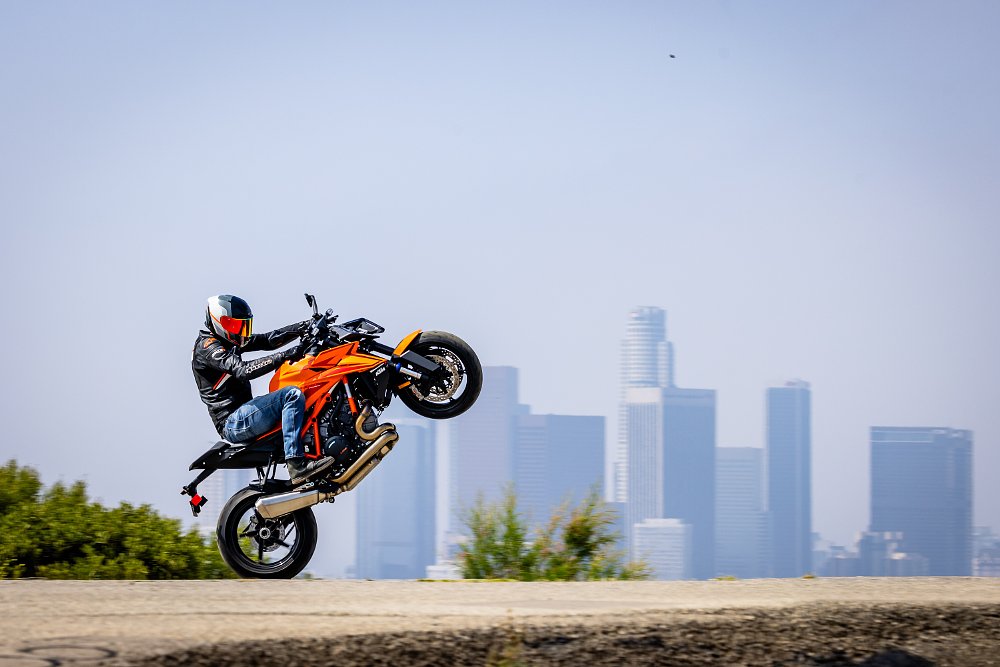
There’s also a range of leniency for the wheelie control, five different levels from Very Low to Very High, which theoretically opens the door to fun-sized wheelies even for people who aren’t good at them. The paddles for raising and lowering the level of traction control on the track double as cruise-control adjusters. Again, these are little fragments of the Super Duke picture that were born from performance but help it as a street bike.
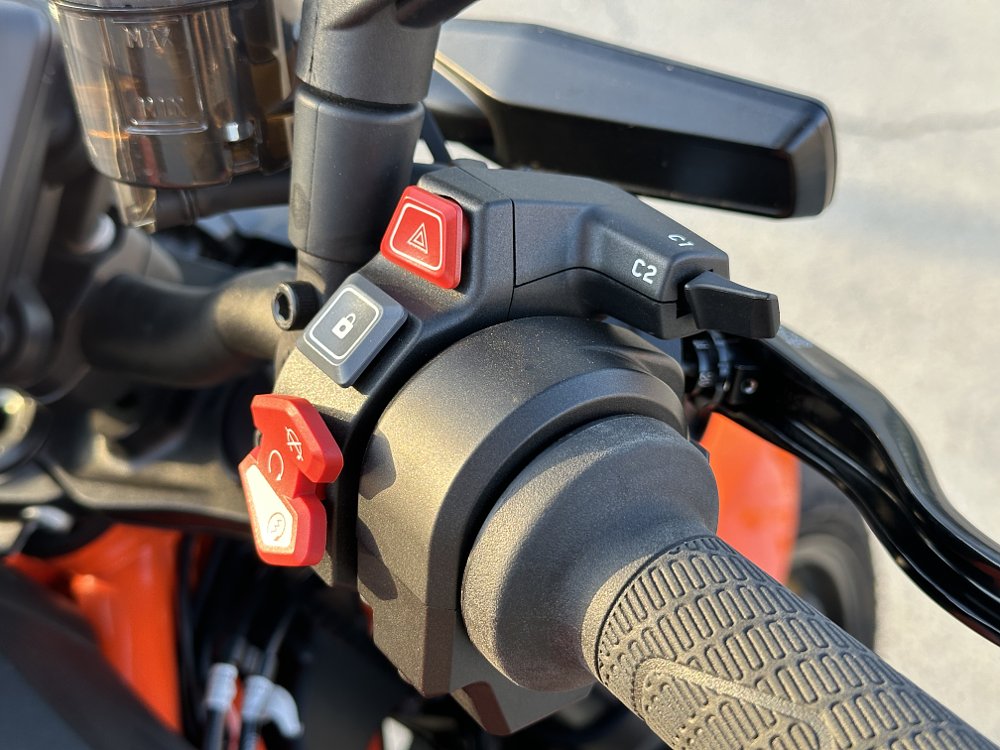
That said, opinions varied in the RevZilla West office on how good the Super Duke actually is as an everyday machine. Everyone seemed to agree on the riding position and the seat, both of which received high marks. Suspension split the jury. The whole crew remarked at how sharp the bike’s handling is but the lighter riders (especially CT staffer Dustin) complained that it feels too stiff, even in the loose Comfort mode.
While I liked the feeling of the engine quaking as it attempted to contain the huge explosions inside, some people didn’t like how much the Super Duke shakes at low rpm. Video Editor Stephen used “crazy” and “numbing” to describe the 1390’s chug-a-lug vibes, while Dustin simply preferred to keep the engine spinning higher, where it was (even) more responsive.
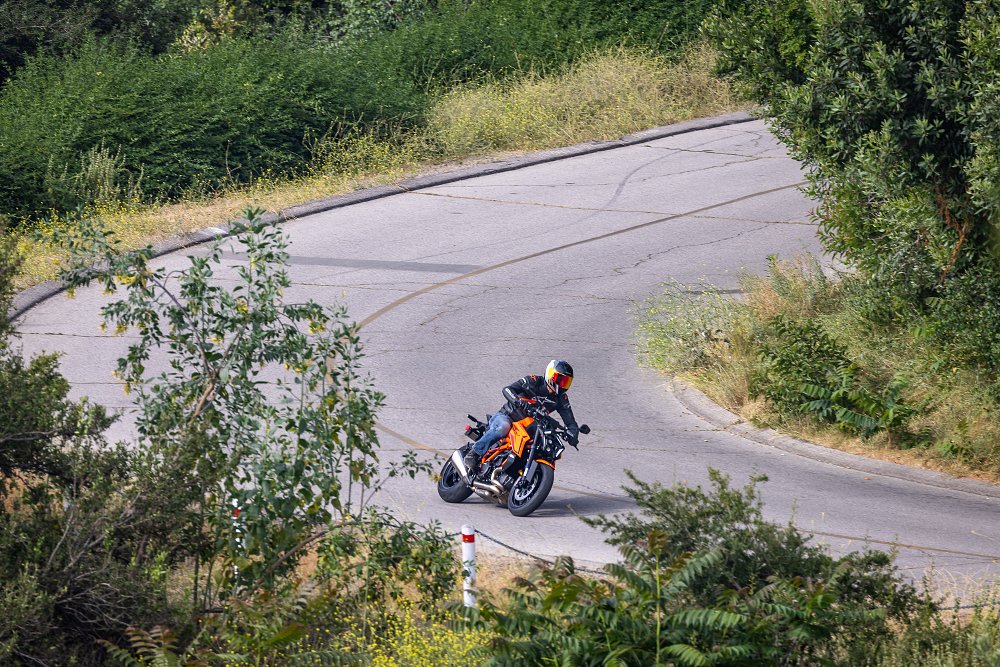
KTM built in a “custom” switch on the right handlebar, presumably in light of how complex the dash is, which shortcuts the rider directly to whichever menu they preset for the rocker. It’s the right idea, but then Dustin pointed out that rather than dumping the rider into a submenu, having the switch simply toggle options with a single flick would have been smarter. I think he’s right.
Where to go from up
When so many pieces have to fit together to create a bike like this, there are going to be cracks. The KTM 1390 Super Duke is the poster bike for modern motorcycling’s broadening horizon of electronic complexities. That doesn’t make it bad, but it does contribute to making it intimidating, and expensive. Base price for a 2024 Super Duke R EVO is $21,500.
Other publications have pointed out that the Super Duke’s sticker number is pretty much in line with the rest of the super-ultra-hyper-naked competitors, even when you tack on options. I think it’s ridiculous that the quickshifter isn’t standard on a $20,000 KTM when it’s included (and adjustable) on a $10,000 Yamaha MT-09, but as much as I grumble it’s definitely worth the $364 KTM is asking.
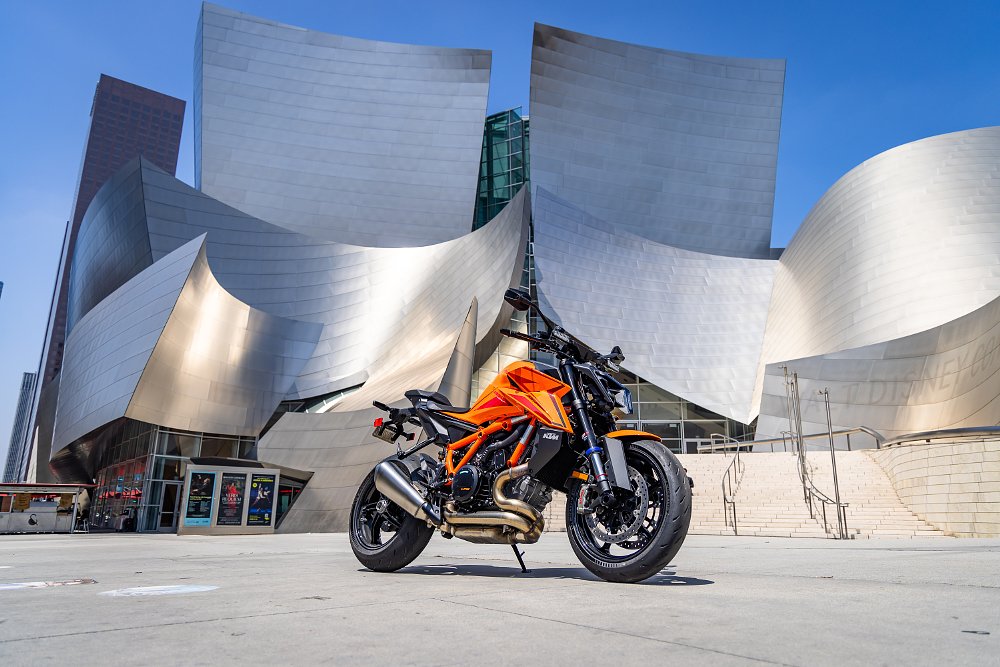
Ultimately, I can appreciate why KTM felt the need to make the 1390 Super Duke even more powerful and elaborate than ever. It’s a flagship for performance and technology that should represent what its parent company can do. Even so, the facets and features aren’t what I like. It’s the unique and mind-bending engine combined with good brakes, everyday comfort, and sharp handling that gets me excited to ride a Super Duke.
It’s a machine that’s dressed up real nice these days, looking mature and refined with its rider aids and variable valves. But the soul of the beast that has made the Super Duke vicious and special over the years is still active in this machine. Don’t you go changin’ too much, now.
| 2024 KTM 1390 Super Duke R EVO | |
|---|---|
| Price (MSRP) | $22,654 (as tested) |
| Engine | 1350 cc, liquid-cooled, 8-valve, 75-degree V-twin |
|
Transmission, final drive |
Six-speed, chain |
| Claimed horsepower | 190 hp @ 10,000 rpm |
| Claimed torque | 107 foot-pounds @ 8,000 rpm |
| Frame | Steel-tube trellis, cast aluminum subframe |
| Front suspension | WP APEX 48 mm fork, adjustable for spring preload, semi-active compression and rebound damping; 4.9 inches of travel |
| Rear suspension | WP APEX shock, electronically adjustable for spring preload, semi-active compression and rebound damping; 5.5 inches of travel |
| Front brake | Brembo Stylema four-piston calipers, 320 mm discs with ABS |
| Rear brake | Brembo two-piston caliper, 240 mm disc with ABS |
| Rake, trail | 24.7 degrees, 4.0 inches |
| Wheelbase | 58.7 inches (+/- 0.6 inches) |
| Seat height | 32.8 inches |
| Fuel capacity | 4.6 gallons |
| Tires | Michelin Power GP; 120/70-ZR17 front, 190/55-ZR17 rear |
| Measured weight | 469 pounds |
| Available | Now |
| Warranty | 12 months, 12,000 miles |
| More info | ktm.com |




